The J1 Student's Bullsh*t-Free Guide to Tax in the US
While it may not be the most fun part of your J1 experience, it's really important that you pay tax and comply with US tax law when you're working on a J1 visa in the US.
Knowing just a little about US tax can help you gain big, which is why we've created this simple, jargon-free guide to help you get it right!
Sprintax is our Online Tax Preparation Service for J1 Visa Holders
1. Introduction to US Taxes
Working in the US on a J1 visa means you'll probably have a number of different taxes deducted from your US income when you're paid. As a J1 student in the US, you'll be considered a non-resident for tax purposes.
As a non-resident, you'll typically only pay tax on income from US sources. Exactly how much tax you pay in the US will depend on how much you earn and where you end up working, as taxes vary by state.
2. What Income Tax Will I Pay In The US?
If you work in the US on a J1 visa, then you'll need to pay tax on income you earn there. The amount of tax you’ll pay will depend on how much you earn and will vary by each state. And if you go to the US on a J1 visa, you'll be considered a non-resident alien for tax purposes and taxed as such.
As a non-resident in the US, you'll be taxed on:
• Any income you earn from employment in the US
• Any stipend, fellowship, grant or award
• Any other income from US sources
Depending on where you choose to work in the US, you may pay up to 4 different types of tax on your earnings, including:
- Federal Tax
- State Tax
- Federal Insurance Contributions Act (FICA) Tax
- Local Tax
Federal tax
In 2023, There are 7 federal income tax brackets and depending on what your taxable income is, you'll pay a rate between 10% and 37%.
2023 Tax Brackets
| Rate | Individuals |
| 10% | $0 to $11,000 |
| 12% | $11,001 to $44,725 |
| 22% | $44,726 to $95,375 |
| 24% | $95,376 to $182,100 |
| 32% | $182,101 to $231,250 |
| 35% | $231,251 to $578,125 |
| 37% | $578,126+ |
State tax
43 states and the District of Columbia collect individual income taxes. Two states New Hampshire and Tennessee are exclusively tax divided on Interest Income. There are seven states that currently don't tax most income earned these are: Alaska, Florida, Nevada, South Dakota, Texas, Washington and Wyoming. State income tax is imposed at a fixed or graduated rate on taxable income of individuals, corporations, and certain estates and trusts.
The rate you pay varies depending on the state so you should check this before you decide where you want to go for your J1!
Many states allow a standard deduction, however typically if you’re a non-resident you cannot avail of this deduction.
The following states have a flat rate individual income tax as of 2022:
Colorado – 4.4%
Illinois – 9.5%
Indiana – 4.9% (note also that counties may impose an additional income tax)
Massachusetts – 8% (most types of income)
Michigan – 6% (22 cities in Michigan may levy an income tax, with non-residents paying half the rate of residents)
North Carolina – 2.5%
Pennsylvania – 8.99% (many municipalities in Pennsylvania assess a tax on wages: most are 1%, but can be as high as 3.9004% in Philadelphia).
Utah – 4.85%
FICA tax
As a non-resident J1 student, you should not be charged FICA tax, however it may happen and if so you should apply for a refund, unless you qualify as a resident alien due to previous presence in the US.
Federal Insurance Contributions Act (FICA) Tax is a US federal payroll (or employment) tax imposed on both employees and employers to fund Social Security and Medicare—federal programs that provide benefits for retirees, disabled people, and children of deceased workers.
Sprintax is our Online Tax Preparation Service for J1 Visa Holders
Local tax
17 states allow city taxes, and counties can levy their own separate indicidual income taxes in addition to state income taxes aswell. Local tax is typically non-refundable except for New York.
These are:
- Alabama
- Arkansas
- California
- Colorado
- Indiana
- Iowa
- Kentucky
- Maryland
- Michigan
- Missouri
- New Jersey
- New York
- Ohio
- Oregon
- Pennsylvania
- Delaware
- West Virginia
Sales tax
Sales tax isn’t a tax on your income but rather on goods and services you buy, like dinner in a restaurant. You may look at a menu and see a price but the sales tax is only added onto the bill when you have to pay, so it's worth keeping an eye out for it!
- Sales tax rates differ by state and since January 2017, 5 states (Alaska, Delaware, Montana, New Hampshire and Oregon) don’t levy a state-wide sales tax, while California has the highest state sales tax with a base rate of 7.25%.
- New Jersey reduced its statewide rate from 6.875 to 6.625% as of January 2018
State Sales Tax Rates 2023
| State | State tax rate |
| Alabama | 4.00% |
| Alaska | 0.00% |
| Arizona | 5.60% |
| Arkansas | 6.50% |
| California | 7.25% |
| Colorado | 2.90% |
| Connecticut | 6.35% |
| Delaware | 0.00% |
| Florida | 6.00% |
| Georgia | 4.00% |
| Hawaii | 4.00% |
| Idaho | 6.00% |
| Illinois | 6.25% |
| Indiana | 7.00% |
| Iowa | 6.00% |
| Kansas | 6.50% |
| Kentucky | 6.00% |
| Louisiana | 4.45% |
| Maine | 5.50% |
| Maryland | 6.00% |
| Massachusetts | 6.25% |
| Michigan | 6.00% |
| Minnesota | 6.87% |
| Mississippi | 7.00% |
| Missouri | 4.225% |
| Montana | 0.00% |
| Nebraska | 5.50% |
| Nevada | 6.85% |
| New Hampshire | 0.00% |
| New Jersey | 6.625% |
| New Mexico | 5.00% |
| New York | 4.00% |
| North Carolina | 4.75% |
| North Dakota | 5.00% |
| Ohio | 5.75% |
| Oklahoma | 4.50% |
| Oregon | 0.00% |
| Pennsylvania | 6.00% |
| Rhode Island | 7.00% |
| South Carolina | 6.00% |
| South Dakota | 4.50% |
| Tennessee | 7.00% |
| Texas | 6.25% |
| Utah | 6.10% |
| Vermont | 6.00% |
| Virginia | 5.30% |
| Washington | 6.50% |
| West Virginia | 6.00% |
| Wisconsin | 5.00% |
| Wyoming | 4.00% |
| D.C. | 6% |
3. Starting A Job In The US And Tax

If you want to work in the US, you'll need a Social Security Number (SSN) or Individual Tax Identification Number (ITIN) to identify you for tax purposes. You must put your taxpayer identification number on your tax returns, statements, and any other tax-related documents.
If you don't have a Social Security Number or Individual Tax Identification Number and you want to file a tax return or get a refund, you can apply for an ITIN with Taxback here.
ITINs are issued regardless of immigration status because both resident and non-resident aliens may have a US filing or reporting requirement under the Internal Revenue Code.
What exactly is an ITIN?
An Individual Taxpayer Identification Number (ITIN) is a tax processing number issued by the Internal Revenue Service (IRS). If you expect to receive a taxable Scholarship, Fellowship or Grant income then you will not qualify for a Social Security Number (SSN) and must apply for an ITIN.
You'll need an ITIN if you're a
● Non-resident alien receiving taxable Scholarship, Fellowship or Grant income and not eligible for an SSN
● Non-resident alien required to obtain an ITIN to claim a tax treaty benefit
● Non-resident alien filing a US tax return and aren't eligible for an SSN
● Non-resident alien filing a US tax return to claim a refund
● A US resident alien (based on days present in the United States) who files a U.S federal tax return but who isn't eligible for a SSN.
You'll need a tax number to file your US tax return and if you receive income from your US employer, you are legally required to file a tax return. You don’t need one if you are just filing a Form 8843, but if you have been supplied with one, you must include it on the form.
It can take 6 to 8 weeks and sometimes longer to obtain an ITIN. And it’s important to be aware that it can often take more than one application before you successfully receive an ITIN. You will need I.D. such as a passport to apply for your ITIN.
You can get your ITIN by applying with Taxback here.
4. Filing Your US Tax Return
Non-resident aliens file 1040-NR “US Non-Resident Alien Income Tax Return” to assess and file federal income and taxes. Even if you don’t earn money during your time in the US, you will still need to file Form 8843 with the IRS by the April 18 for 2023 deadline. It’s the law and there is no way around it!

Tax treaties
If you’re a resident of a country that has a tax treaty with the US, you may be taxed at a reduced rate or exempt from US tax on income from specific sources earned within the US.
The US has a number of tax treaties with foreign countries. Under these treaties, certain residents of foreign countries are:
● Taxed at a reduced rate
● Exempt from US tax on income derived from specific sources earned within the US
If you’re a non-resident alien, a tax treaty will eliminate or reduce taxes on certain income and services, including: Pensions, interest, dividends, royalties, and capital gains.
Under a treaty, if you're a resident (not necessarily a citizen) of a certain foreign country, you may be taxed at a reduced rate or exempt from US taxes on certain items of income you receive from sources within the US.
The reduced rates and exemptions vary depending on the country and types of income.
These countries have tax treaties with the US:
Armenia
Australia
Austria
Azerbaijan
Bangladesh
Barbados
Belarus
Belgium
Bulgaria
Canada
China
Cyprus
Czech Republic
Denmark
Egypt
Estonia
Finland
France
Georgia
Germany
Greece
Hungary
Iceland
India
Indonesia
Ireland
Israel
Italy
Jamaica
Japan
Kazakhstan
Korea
Kyrgyzstan
Latvia
Lithuania
Luxembourg
Malta
Mexico
Moldova
Morocco
Netherlands
New Zealand
Norway
Pakistan
Philippines
Poland
Portugal
Romania
Russia
Slovak Republic
Slovenia
South Africa
Spain
Sri Lanka
Sweden
Switzerland
Tajikistan
Thailand
Trinidad
Tunisia
Turkey
Turkmenistan
Ukraine
United Kingdom
United States Model
Uzbekistan
Venezuela
When you apply for your US tax refund with Taxback, we'll check if you can use a tax treaty to reduce your income tax liability.
Saving clause
Most tax treaties have a clause that preserves the right of each country to tax its own residents, so once you become a resident of the US, you will lose most of the tax treaty benefits. However, many treaties still allow you to claim certain benefits even if you become a US citizen or resident. Basically, it prevents a citizen or resident of the US from using the provisions of a tax treaty in order to avoid taxation of US source income.
If the treaty doesn't cover a particular kind of income or if there is no treaty between your country and the US, then you must pay tax on the income in the same way and at the same rates shown in the instructions for the applicable US tax return.
Many individual states tax income which is sourced in their states and some states don't honor the provisions of tax treaties.
Deductions
Non-resident aliens typically cannot claim the standard deduction except Indian business apprentices due to the US-India Tax Treaty. However, certain non-resident aliens can deduct specific itemised deductions if they receive income effectively connected with their US trade or business.
These deductions include:
● State and local income taxes
● Charitable contributions to US non-profit organizations
● Casualty and theft losses
Since 2018, there have been changes to the itemized deductions that can be claimed.
- Your itemized deductions are no longer limited if your adjusted gross income is over a certain amount.
- Your deduction for state and local taxes is limited
- You can no longer deduct job related expenses or other miscellaneous itemized deductions that are subject to the 2% of adjusted gross income
American Opportunity Tax Credit (AOTC)
If anyone has told you that you can claim this credit as a ‘tax bonus’, this is false.
As a non-resident J1 participant, it is ILLEGAL for you to claim this.
Many participants don’t understand the risks involved and try to claim more money than they are legally entitled to.
The tax credits commonly used to do this are only for US residents who are studying in the US. If you file your tax return illegally and are audited by the IRS, you will not only owe this money back to the IRS but you will be fined and it may affect future US visa applications.
At Taxback, we can file amendments on your behalf, correct poor tax returns made by dishonest companies, and help you to settle any liability or outstanding issue that you may have with the IRS. So, to find out how much you're owed, apply with Sprintax.com here today!
And remember, even if your friends tell you that you can claim that extra $1000, be aware that as a non-resident J1 student, it is illegal to do so.
Tax filing deadline
The deadline for filing your US tax return in 2023 18 April.
Whenever a tax deadline falls on a Saturday, a Sunday or a legal holiday, it's typically moved to the next business day.
Every J-1 program participant has a tax filing obligation.
If you earn income in the US, you must file a tax return. It’s very important that you have the correct documents required to prepare and file your tax return.
These include:
- Passport
- US entry and exit dates for current and all previous visits
- All tax forms you’ve received (including Forms W-2, 1042-S and/or 1099, etc.)
- Visa/immigration status information-Form DS-2019
- Social Security Number (SSN) or Individual Taxpayer Identification Number (ITIN)
Once you have your W2 Form from your employer (typically in January), you can use it to file your US tax return!
How to file your US tax return
You must file your US tax return before the deadline of the following year.
So for example, if you worked in the US in 2022, you should file your US tax return by April 2023. Once you have your W2 form you can begin filing your US tax return.
As a non-resident J1 student, you should fill out a 1040NR form for your tax return to be filed alongside a copy of your W2 form and sent to the IRS.
The 1040NR can be tricky to fill out, so it's important to take your time and follow the instructions. Many boxes won’t apply to you and the majority of the information required is your personal information, earnings, amount of tax you paid, and amount you are to be refunded (if applicable).
Filling out state and local tax return forms can often be even trickier than filing the 1040NR form. To file your state and local tax forms, you can go onto that particular state’s government website or search for them in Google. If you worked in New York for example you will find your tax return forms here.
State and local tax return forms can often be trickier than filing the 1040NR form, often requiring multiple forms to accompany your return.
If this all sounds a bit scary, why not prepare your tax return with Sprintax?
Sprintax is our online tax preparation service for J1 visa holders.
When you prepare your tax return with Sprintax you can:
- save time and stress
- determine your residency status
- prepare a fully compliant US tax return
- avail of relevant international tax treaties, personal allowances, credits & tax deductions
- avail of our 24/7 Vita Qualified Live Chat facility
- maximize your State tax refund
Over 250k people have used Sprintax to prepare their tax return and get their tax refund.
Sprintax is our Online Tax Preparation Service for J1 Visa Holders
Using a tax agent to file your US taxes

If you’re due a refund, Taxback can assist you to receive your money straight to your bank account, anywhere in the world. Taxback has been processing refunds for students and people all over the world since 1996! That adds up to over 1 million tax returns filed to date!
All our specialists are fully registered with the IRS, and at Taxback, we only employ the most experienced people to look after your taxes. Our team of tax experts can answer any tax questions you might have 24/7, file your tax return for you and get you the highest tax refund you’re legally entitled to.
The average US State tax refund for J1 participants is $175.
We can also file amendments on your behalf, correct poor tax returns made by dishonest companies, and help you to settle any liability or outstanding issues you may have with the IRS.
Sprintax is our Online Tax Preparation Service for J1 Visa Holders
Can I deduct expenses?
The general rule is that you can’t deduct personal or living expenses unless specifically allowed by the US tax code. Some foreign students are eligible for a direct write-off of that part of the scholarship or grant that was used to cover qualified educational expenses you paid out of your pocket. The deduction applies to all non-resident students in a degree, certificate, or similar programme at an eligible educational Institution. An eligible Educational Institution includes most colleges, Universities and certain Vocational Schools.
The qualified educational expenses also include all out-of-pocket expenses paid for tuition, academic fees, books, supplies and equipment required by a college or university.
However, unless you're going to study in the US, you can't claim this.
5. Important Documents Explained
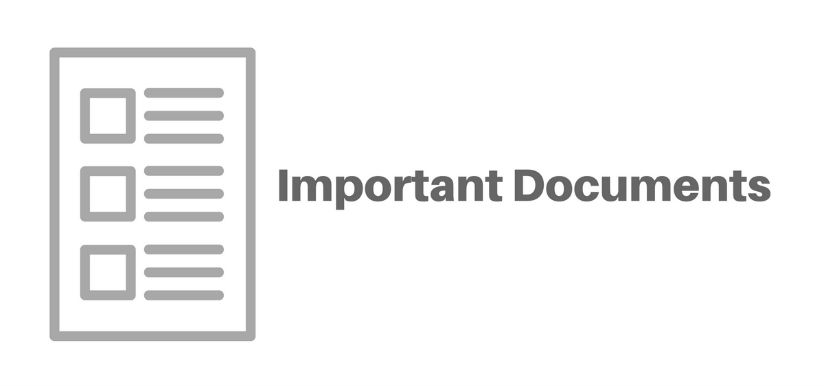
Form 1040NR
This is your US tax return and you can file it along with a copy of your Form W2 at the end of the tax year.
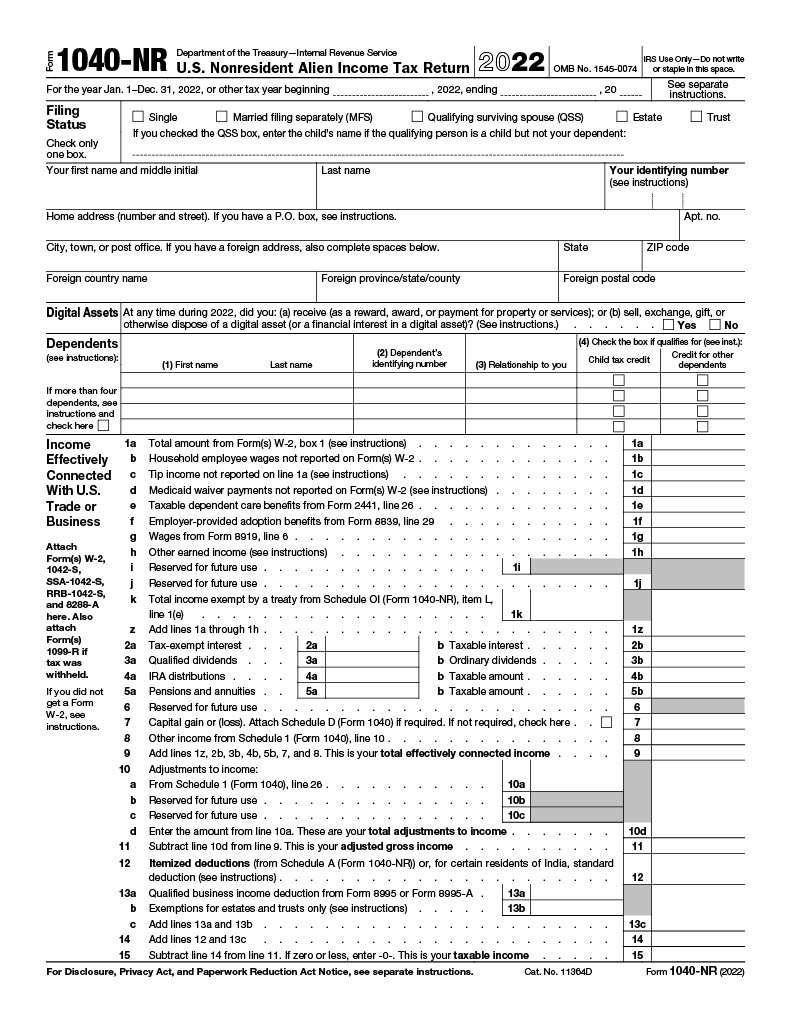
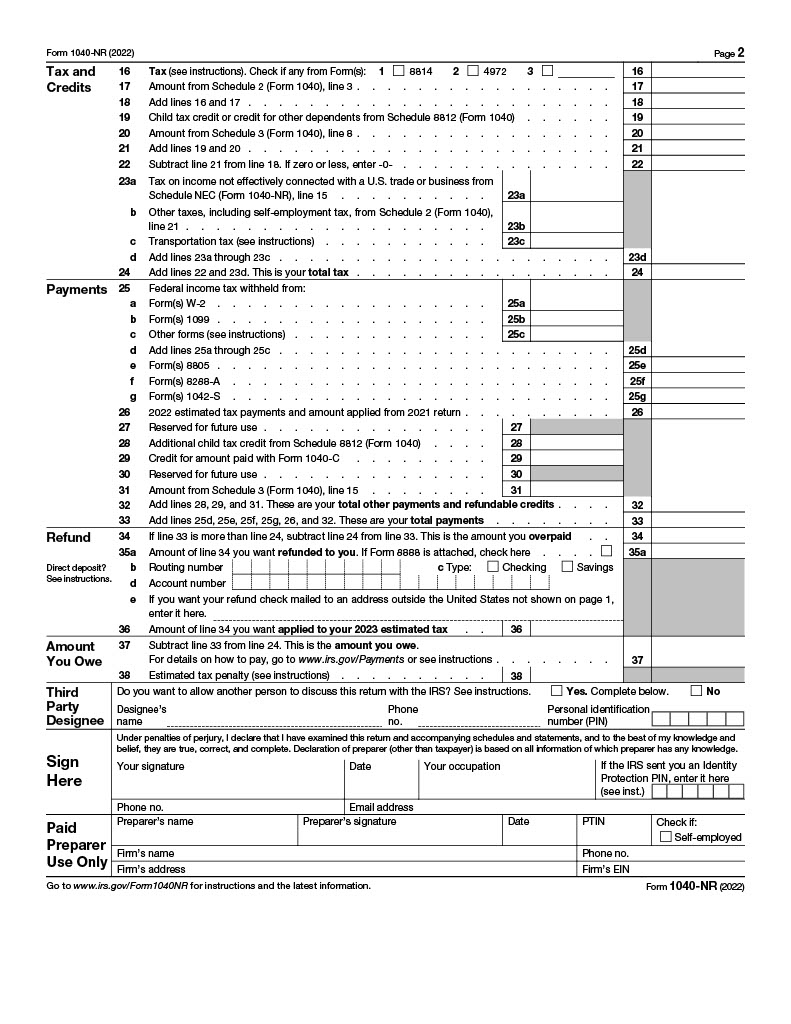
State Income Tax Form
Sample non-resident state income tax form for New York
These forms differ from each of the 50 states in the US, and you will need it to complete the form for the state(s) in which you worked.
Form W2
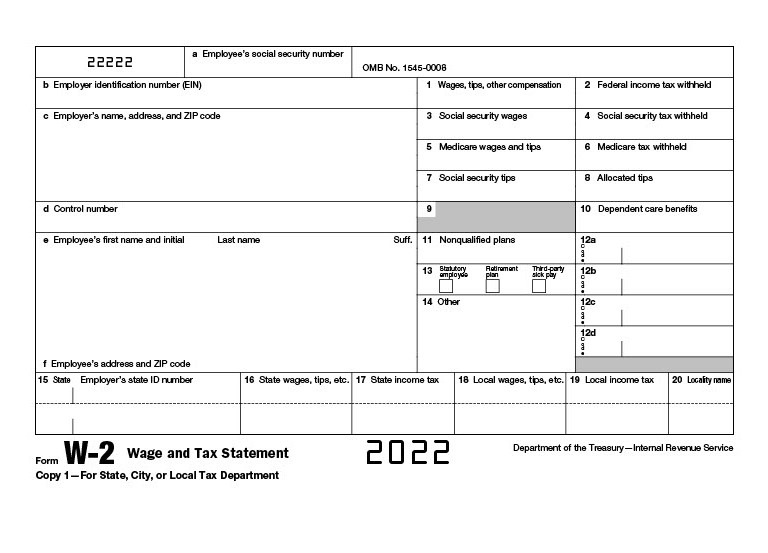
Officially known as a "Wage and Tax Statement", this is an Internal Revenue Service (IRS) tax form used to report wages paid to employees and the taxes withheld. You’ll need your W2 to file your tax return and your employer should give it to you at the end of January. It will state the previous year's earnings and tax withheld.
This form is divided into state and federal sections and there are fields with employer information and details of income. Your employer must complete a Form W2 and they will send it you typically by 31 January.
Form 4070
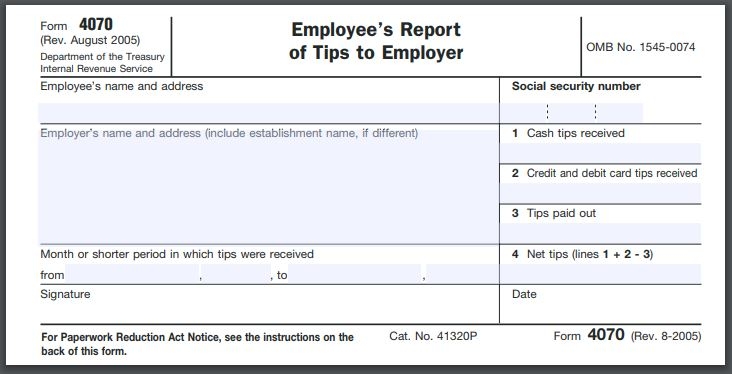
If you earn any tip income over $20 you must report it to your employer each month (usually using Form 4070). Tips are subject to income withholding.
Form 8843
If you are a non-resident under J, F, M, or Q visa, you still need to file a Form 8843 ’Statement for Exempt Individuals with a Medical Condition’. It's not an income tax return, it's a statement you file for the US Government if you’re a certain non-resident alien (including spouses/dependents of certain non-resident aliens).
6. Getting A Tax Refund in the US

To get a tax refund from the US, you'll need to file a US tax return. The average J1 State tax refund is $175 so it’s definitely worth applying to get your tax back! Taxback can help you get your tax back without the hassle and we’ll do all the paperwork. You can start by getting a free estimate of your refund using our online tax calculator.
Tips:
● Fill out a W-4 withholding form once you get a job
● Keep your US bank account open so you can get your refund straight to your account
● You MUST file a tax return in 2023 for 2022 if you earn more than the personal exemption amount
● You should file your US tax return by April 18 2023 for your 2022 tax refund
● To claim your refund, we’ll need your W2 Form or final cumulative payslip and social security number/ITIN number!
● Make sure you get an address and other contact info from your employer
● Get your free tax refund estimate
● No upfront fees so you can apply now and pay later!
The quickest way to find out exactly what you're owed is to apply with Sprintax.com. We'll send you a free, no-obligation estimate of any refunds due.
7. Key Dates For The US Tax Year

There are some important dates you may want to keep in mind for the tax year and to meet your obligations.
January 1, 2023
Start of the 2023 tax year. The fiscal year in the US is the same as the calendar year.
January 17, 2023
If tax is automatically deducted by your employer, you probably don’t need to worry about this deadline.
However, if you didn't pay your income tax for the year 2022 through withholding (or didn't pay enough tax that way), you must use Form 1040 ES. For example, if you’re self-employed or a landlord, you need to pay your final instalment for the year 2022. You don't have to make this payment if you file your 2022 return (Form 1040).
January 24, 2023
The IRS E-file opens. Taxpayers can start filing returns through IRS Е-file partners; tax returns will be submitted to the IRS starting from January 24. Tax software businesses are also taking tax filings in advance.
January 24, 2023
The 2023 tax season starts. Individual tax returns for the year 2022 start being accepted, and processing begins.
February 15, 2023
Deadline for individuals.
If you claimed an exemption from income tax withholding last year on Form W4, Employee's Withholding Allowance Certificate, you must file a new Form W4 by this date to continue your exemption for another year.
February 28, 2023
Deadline for businesses to submit any other 1099 forms (1099-MISC, 1099-B, 1099-DIV, 1099-INT, etc.) and 1096, if filing on paper. These documents relate to business transactions that aren’t covered by W2 (anything that falls outside of tips and wages). If filing electronically, the deadline is March 31.
March 15, 2023
Forms 1042-S, whether filed on paper or electronically, must be filed with the IRS by March 15, 2023. You also must furnish Form 1042-S to the recipient of the income by March 15, 2023.
March 31, 2023
Deadline for electronic filing of Forms 1097, 1098, 1099 (not including 1099-NEC), 3921, 3922, and W-2GS. This date applies only if you file these forms electronically.
April 18, 2023
The last day to file an original or amended tax return from 2020 and claim a rebate unless you have an extension, then is October 15, 2023.
File a 2022 income tax return (Form 1040-NR) and pay any tax due.
Last day to contribute to an Individual Retirement or Health Savings Account (IRA/HSA) and have it considered retroactive to 2021. Finally, it’s the deadline for the first quarterly estimated tax payment of 2021.
Due to the Emancipation Day holiday in Washington, D.C., the deadline to file a 2022 tax return, request an extension, and pay any taxes owed has been extended, even for individuals who live outside the city.
April 18, 2023
The deadline to file a 2022 tax return, request an extension, and pay any taxes owed.
May 15, 2023
Deadline for non-profit organizations to submit details to the IRS or request an extension. These organizations are required to submit a Form 990 or information return so IRS can evaluate their operations and ensure they’re exempt from federal tax.
June 15, 2023
Second-quarter estimated payments are due on this date.
Tax returns from taxpayers staying outside the US on the 15th of April can be filed with automatic extension by the 15th of June.
September 15, 2023
Third-quarter estimated tax payments are due. If an extension was requested on corporate, trust income, or partnership tax returns for the year 2022, this is the final deadline for filing.
October 2, 2023
If you’re self-employed or a small business owner, this is your last chance to set up a SIMPLE IRA for the year 2022. SIMPLE IRAs (Savings Incentive Match Plan for Employees Individual Retirement Account) are Individual Retirement Accounts for small companies and their employees and are designed to be cheaper and easier to maintain than their more corporate counterparts.
Оctober 16, 2023
Deadline for filing a tax return if you filed an extension on the 4828 form before the 15th of April and FBAR (if applicable).
Оctober 16, 2023
For individuals asking for an extension on their 2022 tax returns, this is the deadline to file.
December 31, 2023
Last day to make any tax moves for the year 2022/23. Planning your income and expenses year by year is a really useful method of managing your income tax effectively. By incurring expenses a year early (‘accelerating’ expenses) or delaying them until the following year, you can make significant changes to your tax values!
Sprintax is our Online Tax Preparation Service for J1 Visa Holders
8. Frequently Asked Questions

Q. Do I need to file a US Tax Return?
A. Yes. Every J-1 visa holder in the US must file a tax return at the end of the tax year. It's the law! Prior Tax Cut and Jobs Act from 2017, non-residents could be exempt from filing tax returns in certain situations, whereas of 2018 tax year, each non-resident individual is liable to file a tax return from the first dollar of US income.
Q. What happens if I don’t file a tax return?
A. It’s very important to comply with US tax laws as it may affect your future visa applications.
Q. How do I know if I’m owed a tax refund?
A. The quickest and easiest way to find out if you’re due a refund is by using our online tax calculator or applying for a refund. We’ll send you a free, no-obligation quote of what you’re owed, you won’t pay anything upfront.
Q. What forms do I need to file my tax return and apply for a tax refund?
A. You will need to provide either a:
1. Final Cumulative payslip OR W2 Form
2. Your social security number/ITIN number
Often we can use your final cumulative payslip to start applying for your refund but some states require you to submit a W2. You will receive this form at the end of the tax year.
Q. What is a final cumulative payslip?
A. This is a payslip which is given to you along with your final payslip and states all your earnings and taxes you were charged during the year.
Q. How do I know if I'm a resident or non-resident for US tax purposes?
A. You will probably be deemed a non-resident for tax purposes when you first start working in the US. As a non-resident for tax purposes, you must file a non-resident 1040NR Tax Return.
It’s only when you pass the Substantial Presence Test that you’ll be deemed a resident for tax purposes. Please, note certain J1 and F1 visa holders might be exempt from the Substantial Presence Test for 2 or 5 years depending on their occupation.
Q. What is the substantial presence test?
A. The Substantial Presence test is a test which will allow you status as a resident for tax purposes once you pass it. To pass it you must have been physically present in the US for:
● 31 days of the current year
● 183 days over the last three years
To calculate the 183 days, you can include all of the days you were present in the US over the current year, 1/3rd of the days you were present for the year before, and 1/6th of the days you were present in the US in the year before that.
Q. When can I apply for my US tax refund?
A. You can apply for your tax refund after the end of the US tax year which runs from January to December.
Q. How much money will I get back?
A. How much you get back will depend on your individual circumstances, but Taxback will endeavour to get you back the maximum legal tax refund possible. That amount depends on factors like:
● Your visa
● Your earnings
● What state you worked in
● How long you worked for
The average refunds we get for our clients on J, Q, F, M, and H visas is between $520 and $1,118 so apply today!
Q. How long will it take to get my tax refund from the US?
A. Normally it takes around 10 - 12 weeks from the day your file is received by the tax office to the day you get your cheque.
Q. How far back can I go to claim a refund from the US?
A. US law gives taxpayers who fail to file their income taxes 3 years to submit a return and claim a refund.
9. Need Help With Your US Taxes?
The prospect of filing a tax return can be daunting, so it makes sense to seek help with completing your J1 tax return. But what happens if you don’t enlist the right help?
There are many dubious tax companies out there who boast about how much they save their customers on their tax bill or claim they can retrieve inflated tax refunds. However, it’s important to ask yourself - are they really the best people to handle your tax affairs? After all, if you choose the wrong tax company, and incorrect information is submitted on your tax return, you will be seen as fraudulent by the IRS and you may have to pay fines and penalties.
Students should proceed with caution and choose the correct and legal route! If you choose a legitimate tax agent like Taxback you can still receive a tax refund, while also remaining compliant with the IRS.
With over 1 million tax returns filed since 1996 and over half a billion euro in refunds processed already, you know your taxes are in safe hands!
Taxback is also the only tax agent to become a partner member of the Alliance for International Educational and Cultural Exchange. This Alliance is an association of 76 nongovernmental organisations comprising the international educational and cultural exchange community in the United States. The Alliance serves as the only collective public policy voice of the exchange community.
To find out how much you're due, simply apply for your US tax refund here and we'll send you a no-obligation refund estimate!
Sprintax is our Online Tax Preparation Service for J1 Visa Holders
